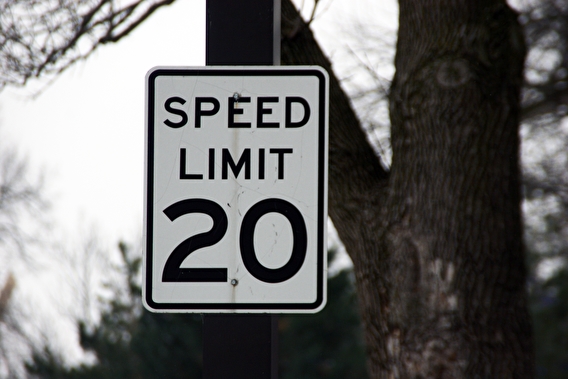
A before-and-after study of speed changes in the City of St. Louis Park, Minnesota, shows that changing posted speed limits may not—at least initially—cause drivers to significantly slow down.
Gary Davis, a professor in the U of M’s Department of Civil, Environmental, and Geo- Engineering led a team that studied the effect of speed limit changes on vehicle speeds—absent other changes in the roadway environment—to help inform local speed limit policies and practices. The project was sponsored by the Minnesota Local Road Research Board (LRRB) and MnDOT.
“We know that physical modifications to a roadway such as speed humps, or strict police enforcement of speed limits, can reduce driving speeds, but the effectiveness of simply changing a speed limit is open to question,” says Davis.
Speed limits on urban roads used to be set at 25 or 30 mph, but Minnesota legislation passed in 2019 allows cities to establish lower limits on certain streets without special approval. The LRRB saw the opportunity to use this change as a natural experiment that could improve understanding about the impacts of urban speed limit changes on driving speeds.
For the study, more than 20 two-lane, two-way roads were selected; most were scheduled for speed reductions, while some without planned speed limit changes would serve as comparison sites. Researchers measured the speeds on the roads two to four months prior to the speed limit changes and again six to eight months after the new speed limits were posted. They then calculated the mean speeds for each site and quantified any difference in speeds before and after the posted speed limit changes.
The findings showed that on average, speeds were just 1 to 2 mph lower after the speed limit reduction, both on streets where the speed limit was lowered and on streets where the limit was unchanged. There was also considerable variability in the driving speeds before and after the speed limit changes. Mean speed changes ranged from a 7 mph decrease to a 2.4 mph increase, and speed variances increased slightly after the speed limit changes.
“This study took advantage of a unique opportunity to evaluate the impact of the new municipal speed limit authority in Minnesota,” says Victor Lund, traffic engineer with St. Louis County Public Works and the project’s technical liaison. “The results suggest that merely changing the posted speed limit may not affect a wholesale reduction in vehicle speeds. Rather, it still appears that good speed limit policy should reflect a roadway’s context and geometry.”
Jack Sullivan, engineering project manager with the City of St. Louis Park, says the “small but positive” speed reductions were what the engineering team had anticipated before the changes were implemented. The city coupled the speed limit reduction with a “20 is Plenty” education campaign and portable speed boards that were moved around town weekly in response to residents’ concerns and data collection needs.
“The new speed limits are appropriate for the community and more aligned with how drivers are actually driving those streets,” Sullivan says. “Lowering the speed limit is not an end-all solution. It is part of a suite of solutions that includes engineering changes. But it does signal to drivers that having a livable, bikeable, and walkable city is a strategic priority for our community.”
Researchers say the study could be repeated in a few years to help determine if driving habits change over time—and if speeds eventually decrease closer to the posted speed limit.
—Megan Tsai, contributing writer